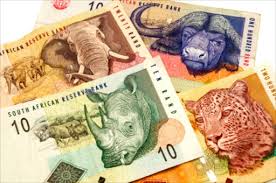The South African rand lost 30% of its value within 12 months after the start of each of the last four US rate-cutting cycles and 40% of its value within 15 months.
The start of a US rate-cutting cycle, combined with other global conditions, could have serious implications for the rand, says currency strategist at Rand Merchant Bank (RMB), John Cairns.
Speaking to 702, Cairns said that the last four times the US Federal Reserve cut interest rates, the rand weakened significantly within the following 12 months.
“On average the rand weakened 30% in the first year after the Fed cuts in the last full cycle,” he said. “This is ominous as the Fed is about to cut rates at the end of this month.”
Cairns said that the Fed cuts alone are positive for the rand as it encourages risk-taking and improves the country’s yield differential. This is part of why the rand has strengthened from R15/dollar to under R14/dollar, he said.
“This is exactly the pattern we have seen around the previous Fed cuts. In the previous four cuts, the rand gained on average by 5% in the two months after the first cut.
“However three to 12 months after the Fed cut, what we have experienced is significant weakness in the US economy. When that weakness comes through then we get risk-off and money flowing out of emerging markets and rand weakness.
“It’s not the Fed cutting which will generate the rand blowout, but the Fed cut is signalling that something is going wrong in the US economy and when we get proof of that then we get this rand weakness.”
The rand has gained nearly 3% over the past month, and is leading peers in an advance against the dollar, Bloomberg reported.
Three-month implied volatility has dropped to a 15-month low, suggesting traders anticipate price swings to moderate in coming months.
“The South African political drama is relatively benign in the context of the last few years and in relation to the country’s peers,” said Nic Borain and Shaun Daly, analysts at BNP Paribas, which recommends a long-rand position and sees fair value for the currency at 13.50 per dollar.
“We do not expect domestic politics to trigger market shocks, whether to the downside or upside, with the impetus likely to be much more from the domestic macro economy, including global factors affecting all emerging markets.”
Where the rand is heading
Cairns said that while the above cycle has repeated a number of times, it is still a risk view and one that analyst hope will not play out.
Specifically, he raised concerns that the rand could test as high as R18, R19 or even R20 to the dollar if history repeats itself.
“Our view at this stage is not nearly so negative and we are hoping that the US economy will just slow down and maybe pick up again next year.
“However, we worry that maybe history repeats itself and so our view to our clients and prospective clients is to take this risk seriously and look at risk mitigation.”
Cairns said that if there is a rand blowout, then recovery will almost certainly follow. However, this will likely only occur in the second half of 2020.
The local unit lost some ground against the major currencies in morning trade on Tuesday:
Dollar/Rand: R13.92 (0.45%)
Pound/Rand: R17.34 (0.28%)
Euro/Rand: R15.59 (0.31%)
Sources: 702; Business Tech












